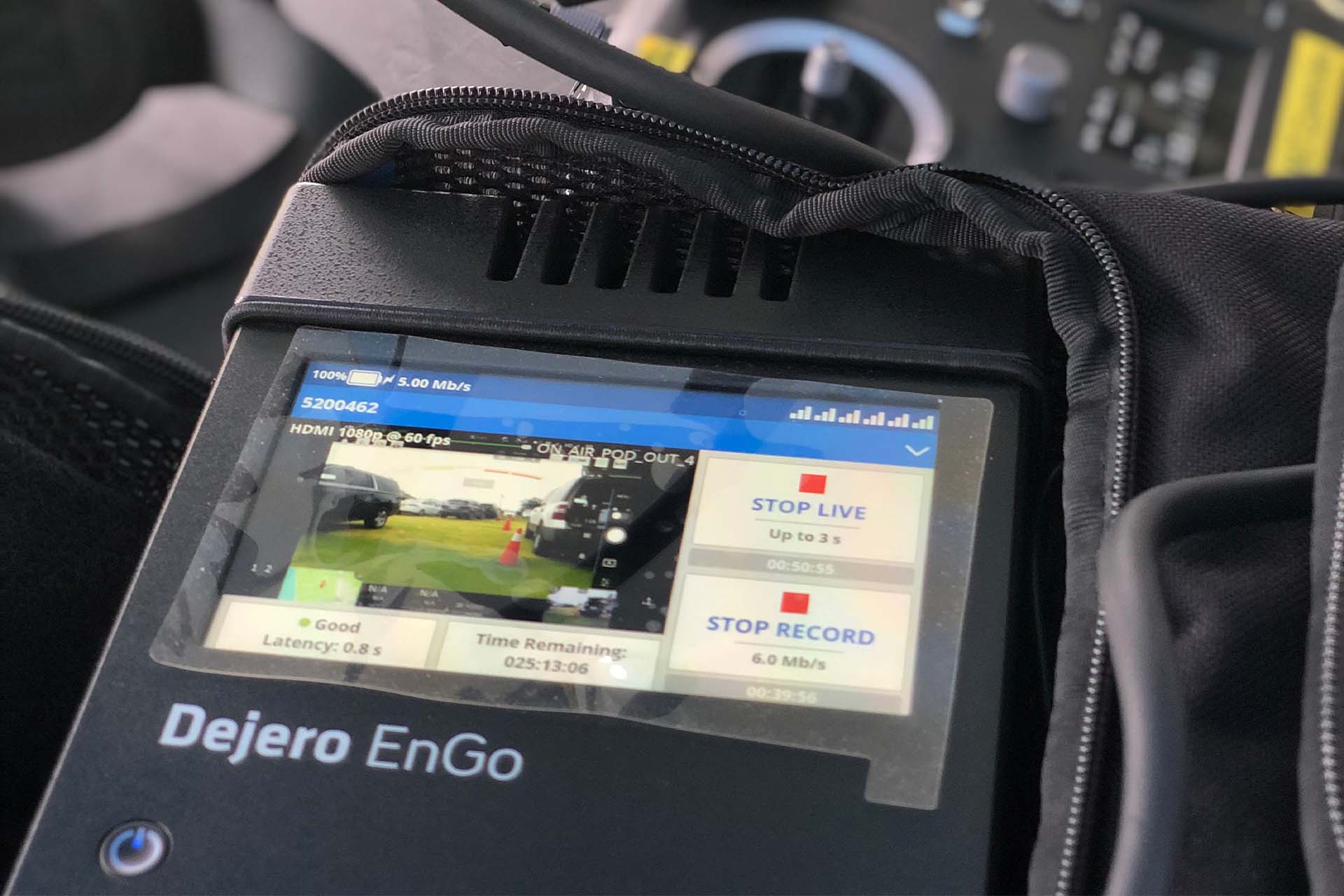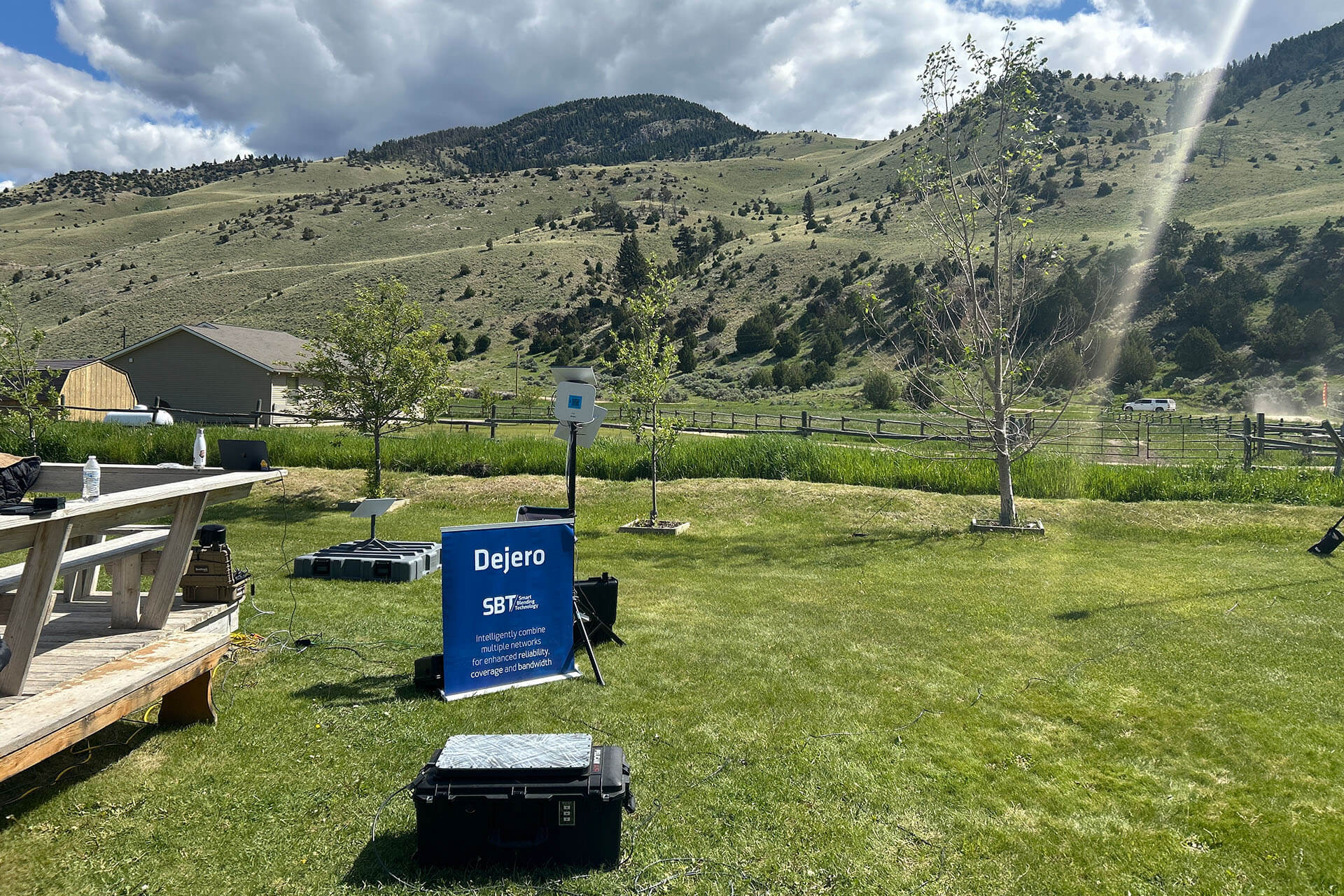Getting a live multi-camera production to air is a tangle of logistics, whatever and wherever an event is taking place.
Planning can take months; the coordination of getting people and equipment onsite is challenging; setup and test times are laborious; bottom line is getting everything to connect reliably onsite is demanding.
And then things can get even more complicated. Factor in distance, multiple roving cameras, quick turnaround times for content, uneven terrain and hundreds or thousands of spectators, and the challenges ramp up fast.
Hole-in-one scalability
At this year’s Media Production and Technology Show at Olympia in London, Dejero’s Director of Brand and Communications Ivy Cuervo, chaired a panel which took a deep dive into the demands of traditional live wide-area TV infrastructures. “Hitting an Ace: the power of private 5G networks for live sports coverage,” described how Dejero’s range of Smart Blending Technology solutions can overcome many of these documented issues, and how scalable private 5G networks can provide a robust wireless backbone at a fraction of the cost.
In the session, Michael Dugard from broadcast facilities supplier Prolink TV joined Dejero Technical Account Manager, Sukhvir Grewal, to describe how they developed an alternative to traditional event rigging. Rather than laying a physical infrastructure, they blended private 5G networks with a range of network paths for ultra-dependable low-latency connectivity.
Using golf as an example, the geography can cover up to 200 acres of land, with substantial cabling and rigging costs. Utilizing up to 30 km of cabling, typical setup time is seven days and four days to de-rig. Long cable runs not only pose health and safety risks but attract a series of natural hazards; electrical cables are irresistible to squirrels and other rodents, which means that each cable must be manually checked every day. Coupled with the transportation of cabling, generators, hoists, and buggies, wired connectivity across open spaces is hugely labour and cost intensive. It’s no surprise that only the biggest events can justify this level of resources.
Reliable wireless connectivity for live productions can be difficult to secure in outdoor spaces. Location is paramount, and large events like music festivals or state occasions can be some distance from cellular towers. Meanwhile, thousands of visitors competing for the same bandwidth can put any of the available cellular networks under significant pressure, and wireless bandwidth which looked sufficient during setup can quickly be oversubscribed.
This makes trying to wirelessly move HD video signals tricky.

Ivy Cuervo, Dejero Director of Brand and Communications, Michael Dugard, Prolink TV Director and Sukhvir Grewal, Dejero Technical Account Manager, at MPTS 2023 discussing the power of blending public and private 5G networks for reliable, multi-camera, live sports coverage.
No event size limits
Dejero’s Smart Blending Technology not only provides reliable wireless connectivity. It also opens the door to cover more niche events, such as second tier sports or specialist festivals or small music concerts. It also enables broadcasters to maintain the same professional levels of coverage at a much lower cost. Smart Blending Technology guarantees dependable onsite backhaul by aggregating multiple IP networks across cellular, satellite and fiber connections, and dynamically managing bandwidth, packet loss, and latency differences in real-time. It creates a ‘network of networks’ to enable content producers a more robust bandwidth than a single provider can deliver.
Blending private 5G mesh networks with public 5G networks provides an additional guaranteed layer of connectivity. Dejero has been working with private data networks for multi-camera streaming for many years.
Up to standard
4G LTE private networks are notoriously difficult to manage due to multiple international standards and non-standard technologies, but 5G has a broader common spectrum for international use as well as an agreed hardware infrastructure.
While access to private frequency bands must be applied for from the relevant communications regulator in advance, Dejero already has relationships with multiple international licensing partners, and a local 5G mast is quick and easy to set up.
A single portable mast operating at 12 feet can cover a wide range ─ in this example it can easily cover an entire golf course ─ and Dejero can also create private point-to-point networks which are independent of regulatory approval using point-to-point access to create a secure LAN.
A single mast will support site-wide connectivity for twelve simultaneous 10Mbps cameras at as low as 500ms latency, and with no dropouts. With this in place, scalability is simply a mathematical exercise, and the same model can be applied to any broadcast model which operates over a wide area and features hostile geographical elements, such as motor cross, inaugurations and press scrums, and cultural festivals.
This system enables the 4x4 MIMO antenna architecture on connected EnGo video mobile transmitters to achieve guaranteed connectivity, independent of public networks. The added security of Smart Blending Technology to combine public and private connections guards against unexpected surges in traffic, delivering camera feeds in real time to an onsite Dejero GateWay network aggregation solution for backhaul.
Ultra low-latency with Starlink Satellite
Meanwhile, offsite delivery can utilize the same technologies, seamlessly blending networks across cellular, LEO, GEO and MEO satellite connections, and fiber lines, into one data pipe. Dejero’s partnership with Starlink helps deliver low latency streaming with a latency of around 25ms. Starlink operates the world's largest low-orbit satellite constellation with over 1,000 satellites in low Earth orbit to provide low latency coverage from even the most remote venues.
The ace: private 5G networks
Blending public connectivity with Dejero’s private 5G networks can significantly lower production costs. It drives down installation, reduces setup and derig times, minimizes the number of staff onsite, cuts travel and accommodation, removes the need for tonnes of cabling, and speeds up the production process for the creation of onsite highlight packages.
Above all, it enables smaller, more niche events to provide the same professional coverage as top tier events.
Now that is something worth supporting.












